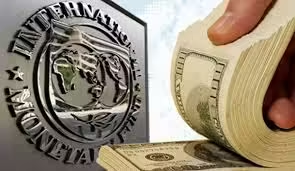The deliberate shift the IMF rescue of Sri Lanka shows toward economic recovery
A country at a turning point!
One of the greatest economic crises Sri Lanka has ever gone through. It has seen an amazing political and financial turn-around. Originally selected on a Marxist platform, President Anura Kumara Dissanayake has focused all of his efforts on assisting the International Monetary Fund (IMF) bailout—a break from his past campaign promises. This decision highlights the deliberate balance between political values and the terrible realities of financial survival.
The scenario shows a historical equivalent of an economic catastrophe.
Social and financial anarchy followed Sri Lanka’s April 2022 default on its $46 billion international debt. Mass demonstrations and the resignation of then-president Gotabaya Rajapaksa resulted from a major shortage of foreign currencies preventing the country from buying required goods. The failing economy was stabilized via intervention including a $2.9 billion IMF bailout. Strict terms were part of the agreement, but it also included cuts in energy subsidies, increased taxes, and restructuring of loss-making state corporations.
Why the turnabout?
A guarantee Made during a campaign turnaround originally against the IMF plan. President Dissanayake’s National People’s Power party questioned their debt calculations and offered to renegotiate the terms. Still, the president stressed in his first statement to the new parliament the shortcomings in Sri Lanka’s recovery. Therefore excluding any renegotiation.
“There is no room to make mistakes, the economy is in such a state that it cannot take the slightest shock,” he remarked.
This pragmatic approach obviously shows a great necessity to maintain financial stability and stop endangering the acquired achievements of the last year.
Choosing a difficult road demand for IMF rescue requires for significant modifications in important economic reforms:
One key increase to generate government income is tax reform.
Popular among people but applied to lower budgetary deficits, energy subsidy removal is not.
Most importantly needed to unlock additional funds is debt restructuring.
D Nissanayake’s government notably approved an 11% interest rate drop and a $14.7 billion rearranging of international commercial borrowing after a 27% haircut for private creditors.
Restructuring debt: A tipping point towards healing
Restructuring $6 billion in bilateral loans has shown ongoing progress even as official agreements are pending. Private creditors have mainly agreed to agreements and show some hope for Sri Lanka’s long-term recovery as $12.5 billion of international sovereign bonds among the debt.
Political Effect: Control Contentment
Dissanayake’s turnabout has generated mixed feelings. His party’s electoral success was driven by general discontent with conventional politicians. Now while he carries out policies previously attacked, his government has to maintain public confidence while ensuring financial stability.
Realism above rhetoric agent
President Anura Kumara Dissanayake’s approval of the IMF bailout reveals a realistic awareness of Sri Lanka’s economic situation. Furthermore, it deviates from his campaign goals, the law indicates a dedication to help to strengthen the unstable national recovery. The success of Sri Lanka will depend on balancing the demands of its people with reform implementation as it negotiates this stormy period.
For more Updates visit Pakistan Update
IMF Intervention Marks Turning Point for Sri Lanka’s Economy
RELATED ARTICLES
LEAVE A REPLY
Recent Comments
on Rajab Butt, Ducky Bhai, and Nani Wala Under Fire After Talha Reviews Exposes Their Online Courses
on Rajab Butt, Ducky Bhai, and Nani Wala Under Fire After Talha Reviews Exposes Their Online Courses





¡Hola aventureros del juego
EspaГ±a sin licencia es una opciГіn legalmente gris, pero popular. Muchos usuarios valoran la libertad que ofrecen estas plataformas. [url=http://casinossinlicenciaenespana.guru/]casinossinlicenciaenespana[/url] Siempre juega de forma consciente.
Casinos sin licencia de EspaГ±a permiten depГіsitos mГnimos bajos. Es una buena forma de empezar sin arriesgar mucho. Ideal para nuevos jugadores que quieren probar.
Consulta el enlace para más información – http://casinossinlicenciaenespana.guru/
¡Por muchos sonrisas!